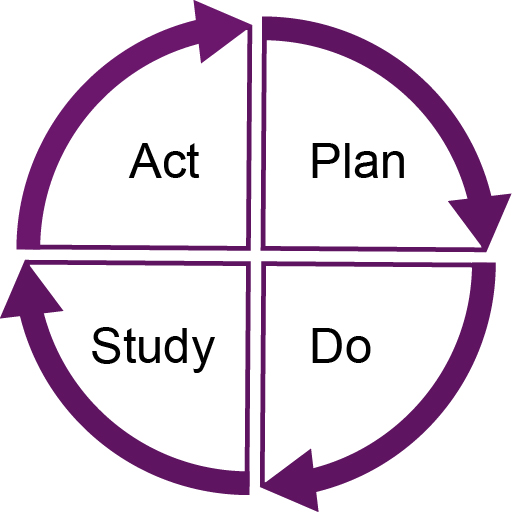3.1 Reflection in SoTL
Reflection is conceptualised as an intentional and systematic analysis of one’s own practice. Kessl (2009, p. 312) defines reflection as ‘a process of thinking, of comparing and verifying for the purpose of learning about and improving practice, developing practice-based theory, connecting theory to practice, and improving and changing practice’.
Reflection is an ongoing process in a SoTL inquiry, whether it is for formulating the inquiry or to reflect on the events and progress at each of the stages of the SoTL inquiry.
A range of models are presented in the Reflection Toolkit [Tip: hold Ctrl and click a link to open it in a new tab. (Hide tip)] (2020) that can be used to structure reflection on experience and to self-evaluate your SoTL inquiry. For example, ‘What? So what? and Now what?’ is a simple three-stage model for reflective learning (Driscoll and Teh, 2001): thinking about an experience, its implications and an action plan for the next steps. Another model in the Reflection Toolkit (2020) is the integrated reflective cycle, which is a four-stage model of reflection to make sense of and learn from an experience, reflecting on your actions by exploring feelings and assumptions, thinking about the experience in the context of professional literature and your own academic practice, and preparing for the next set of actions/experiences (Bassot, 2015, 2016).
In addition to the models in the Reflection Toolkit (2020), you may find the ‘plan-do-study-act’ (PDSA) cycle useful for your SoTL inquiry. The PDSA cycle (Figure 3) is also known as the Deming Wheel or Deming Cycle (PDSA Cycle, 2020). It is a systematic process for gaining valuable learning and knowledge for the continual improvement of a product, process or service.
In the SoTL context, the plan-do-study-act cycle facilitates learning through planning aspects of your SoTL inquiry, doing it, observing and studying the results and acting on what is learned (Stewart et al., 2019).
The PDSA cycle involves the following steps:
- Plan: Define your objective and develop a plan to achieve that objective: Who? What? Where? When? Determine the data that you will need to collect to determine the success of the plan.
- Do: Carry out the plan and document problems and unexpected observations. Collect data that you may need to determine the success of your plan.
- Study: Analyse your observations, notes and data and report the results to your colleagues or whoever else needs to be informed. Compare the results to the predictions and summarise what you and others in your team have learned from the experience and what went wrong.
- Act: The ‘act’ step closes the cycle, integrating the learning generated thus far, which can be used to adjust the objective, change methods or reformulate a theory altogether. Decide which changes are needed for improvements. Plan the next cycle.
The plan-do-study-act cycle is an iterative process and the four steps can be repeated as part of a never-ending cycle of continual learning and improvement.
You may like to choose one or more of the models of reflection that have been suggested here to suit your context and SoTL inquiry. For example, you could use the integrated reflective cycle for formulation of the inquiry by reflecting on your academic practice and contextualising it within the literature review. You could also use the integrated reflective cycle at the end of the SoTL inquiry as a means to evaluate the SoTL inquiry.
While the inquiry is being conducted, you may choose to use the ‘What? So what? Now what?’ model or the PDSA cycle at every stage of the SoTL inquiry to reflect on the inquiry and the progress you are making.
In each of the models in the Reflection Toolkit (2020), questions are proposed to structure your thinking. Questioning approach to professional practice is an excellent way of delving deeper into not only what you did, but why; this is a key feature of critically reflective practice and reflexivity.

